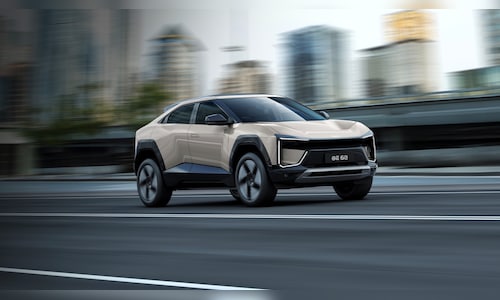

Nakra added that the journey of EV adoption in India is relatively new, having begun around 2018. In contrast, global markets with higher EV penetration, often in double digits, have had over a decade of focused efforts. He highlighted the pivotal role of government schemes such as FAME (Faster Adoption and Manufacturing of Hybrid and Electric Vehicles) phases I, II, and III, along with the Production Linked Incentive (PLI) programme and investments in charging infrastructure, which have been implemented over the last five years.
According to Nakra, India’s EV adoption, currently at about 2.5% in the passenger vehicle segment, is influenced by the limited variety of electric models available. Many current EVs are converted internal combustion engine (ICE) vehicles, which often come with a price premium of 25–30% compared to their ICE counterparts.
Also Read: Hyundai Tucson bags 5-star Bharat NCAP rating with top scores in child safety tests
He emphasised the importance of introducing “born electric” vehicles specifically designed as EVs, such as electric SUVs, to stimulate consumer interest. He revealed that 23 new electric SUVs are expected to be launched in India by 2027, marking a critical development for the market.
Som Kapoor, Partner at EY India, stressed that EV adoption largely depends on usage. He observed that the focus should shift from passenger cars to high-usage categories such as two-wheelers, three-wheelers, and buses. These segments are often employed for commercial purposes, including delivery and transportation, where vehicles are in use for longer durations, ensuring greater return on investment.
Kapoor said, “Between charging infrastructure, safety, and product availability, that is where the inflection point will truly come through. Give it another 12 to 18 months to see what is the point in time wherein you hit inflection.”
RK Misra, Co-Founder of Yulu Bikes, expressed concern about the inconsistency in India’s EV policies. While praising FAME-I for its broader scope, he criticised subsequent phases, noting that fleet operators, who drive significant environmental and economic benefits, are often overlooked.
Read More: Tata Sierra to launch by late 2025, EV variant to debut first
Misra explained that commercial fleets like taxis and delivery vehicles, which are in use for 12 hours a day, provide greater value than individual vehicles, typically used for only one hour daily. He also pointed out the exclusion of low-speed EVs, widely used in delivery services, from many incentive schemes.
Highlighting the lack of clarity and long-term planning in EV policies, Misra questioned why Delhi’s EV policy had lapsed before being reinstated, especially given the city’s high pollution levels. He argued that extending policies only until March 2025 creates uncertainty and undermines public confidence.
The Co-Founder of Yulu Bikes stated, “If the policy is there, it has to be consistent, and it has to be meaningful, and that can happen only when you go for mass adoption.”
Also Read: India’s top 7-seater SUVs in 2024 with captain seats for comfortable family travel



